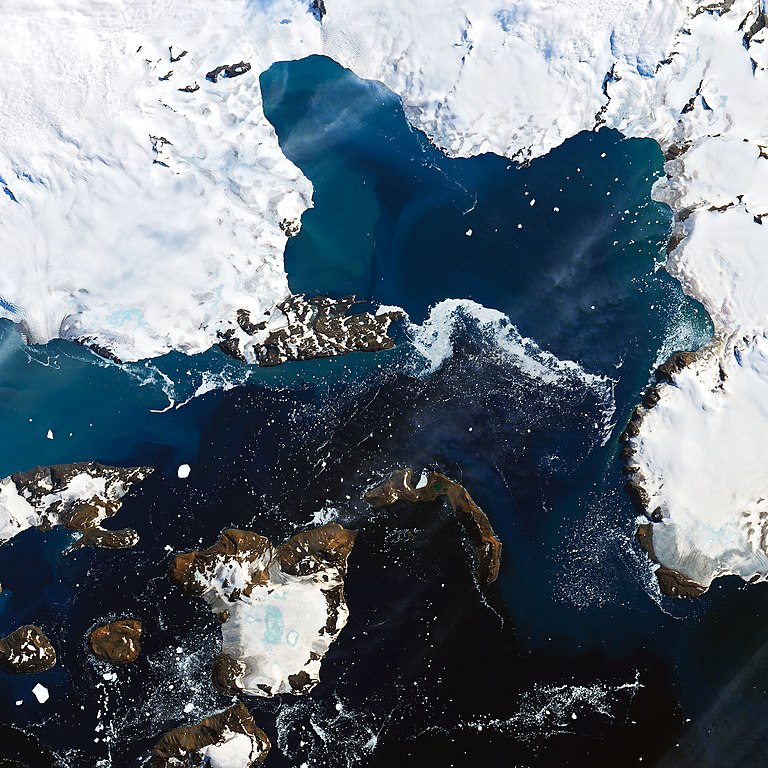
Regions in both the Antarctic and Arctic have simultaneously experienced freakish heat waves, sending temperatures soaring 60 and 50 degrees Fahrenheit above normal, respectively, an unprecedented event that occurred despite the fact that at any given time each pole is experiencing opposite seasons.
“They are opposite seasons. You don’t see the north and the south (poles) both melting at the same time,” explains Walt Meier, an ice scientist with the National Snow and Ice Data Center. “It’s definitely an unusual occurrence.”
These simultaneous temperature spikes happened on March 18, just two days before the first day of spring in the Northern Hemisphere, and autumn in the South. Temperature records were broken at numerous weather stations across Eastern Antarctica, with the biggest departure being recorded at Concordia Research Station, where the temperature reached 14°F (-10°C)—a full 59°F (32.8°C) above the -45°F (-43°C) norm for that time of year, according to University of Wisconsin meteorologist Matthew Lazzara. Although this temperature may still seem quite frigid, Concordia Station is situated deep into the East Antarctic ice sheet at an altitude of 10,607 feet (3,233 meters), slightly higher than Alma, Colorado’s 10,578-foot elevation (3,224 meters), the highest community in the US.
350 miles (560 kilometers) away, the temperature at Vostock Station—the coldest place on Earth—rose to 0°F (-17.7°C), breaking the station’s own record high by 27°F (15°C), according to a tweet posted by extreme weather tracker Maximiliano Herrera. Out at the coast, the base at Terra Nova Bay saw above-freezing temperatures of 44.6°F (7°C).
Meier points out that it is impossible to tell if a one-day event like this, as unusual as it is, is due to climate change; however, if more extreme temperature events like this begin to occur, that would be an indication that the climate is shifting. Regardless, the average temperature across the Antarctic continent on that day was 8.6°F (4.8°C) warmer than the 1979-2000 baseline temperature; also on March 18 the entirety of the Arctic region was 6°F (3.3°C) over the ’79-’00 average.
Subscribers, to watch the subscriber version of the video, first log in then click on Dreamland Subscriber-Only Video Podcast link.
The world will be in an arms race at least for the next decade or so. Not sure climate change is going to get the press it deserves. Of course it’s just as much a threat. It will last longer and kill more.
It’s happening. . .
It was not the actual temperature. I was a model simulation. See here: https://notalotofpeopleknowthat.wordpress.com/2022/03/23/polar-heatwave-scare-debunked/
Although our posting rules prohibit linking to articles like this, I’m going to leave it be for the time being because I think it’s useful as an exercise in recognizing disinformation. Reading some of these pieces, I have to wonder if the authors actually believe what they’re writing, or are they just bad liars?
The author’s entire assertion that the story is false hinges on MSN having used an image of a simulated temperature anomaly map to illustrate the article, somehow making the leap of logic that the use of that image overrides the actual, real-world measurements that were made by actual, physical weather stations in the Arctic and Antarctica. Polar Heatwave Scare Debunked even outright states this, but conveniently ignores this fact entirely once its based-on-a-simulation argument starts.
For my own part, I deliberately didn’t use the 70°F figure because the sole source of that was a climate-watcher’s blog that didn’t cite its source. Rather, I went with the (very real-world) measurements that I could get my hands on, those listed in the originating AP article (and not the “two left-leaning media outlets” mentioned, another incorrect assertion made in the Not A Lot Of People Know That blog)–hence the “Nearly 60°F” figure used in the title.